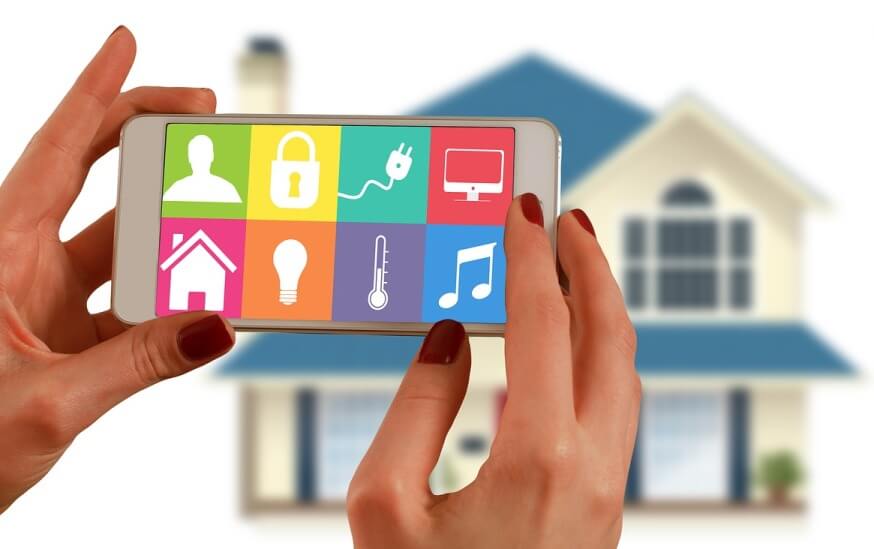CCTV is a great way to protect your home or business. CCTV stands for Closed Circuit Television, which is a bit of a misnomer these days. Many so-called CCTV systems are based on network cameras. But the idea remains the same. You can see what happens with these cameras. You can also record what they see. They provide home security and protection.
Types Of Security Systems
You might see terms like NVR and DVR. They essentially mean the same thing. In general, an NVR is a digital system and the DVR is an analog system*. Both are still used these days but digital systems are becoming increasingly popular.
NVRs use IP Cameras. These are digital cameras that use IP (internet protocol) to connect to the NVR, which records what they see.
DVRs use analog cameras.
For the end user it makes little difference which system is used. Both will connect to the internet, can be viewed on mobile devices, and will record data to a hard drive. The big difference is in the quality and flexibility of cameras.
You’ll find analog cameras systems are cheaper and have different resolutions to IP cameras. Usually analog cameras are used in a situations where image quality isn’t paramount.
An analog camera needs two cables to make it work. It needs one for image (a coax) and one for power. The IP camera is powered via the ethernet cable (called POE) and hence needs only one cable per camera. This makes IP cameras more flexible and easier to install in tricky situations. You can also add point-to-point wifi and wifi cameras to your network.
For these reasons NVR (IP camera based) CCTV systems are a lot more flexible than analog CCTV systems.
* that’s not totally true either. DVR stands for Digital Video Recorder. It receives images from analog cameras and converts them into digital images to store them. The DVR has an ethernet port and will connect to a standard IP network.
Other Things To Consider Before Installing CCTV
Cheaper systems that are sold as bundles at the electronic store can be surprisingly good. Many in the CCTV industry will tell you they’re rubbish but they do have applications in some circumstances. What they will probably lack is features like:
Motion Detection
Motion detection and event detection is the ability to detect motion and record it. Smart systems will have many ways of fine tuning detection settings. The ability to control which areas are detected, what size objects are detected and what kind of movement requires recording are built into high end solutions.
Good event detection makes a big difference when you’ve had an incident. It’s important your CCTV system recorded the incident. And it’s important it didn’t record 1,000s of other inconsequential movements, making finding the event you need difficult to find.
Timelapse
Many of the better systems these days are building in a timelapse feature. This allows you to quickly roll through the events of the day. If you’re looking for something and you’re not sure what time it occurred, this system is invaluable. Without it, many people just give up trying to find the recording (unless it’s really important). Watching hours of video just isn’t a great option. Watching a timelapse of important incidents, on the other hand, isn’t a burden.
Phone Apps
There is a massive gap between good phone apps and poorer ones. Good phone apps make it so easy to scroll back and forth through a timeline, to see when incidents occur and to seek back and forth between movement events.
You can also set your phone to get push notifications, meaning you’re not relying on email or SMS to get updates on events. For SMS you need to pay a third party provider. For email you have to make sure you know all your email settings for SMTP. A good app bipasses that by providing push notifications directly to you.
Other Features
Home Mode is another feature you want to have. This works by the system knowing when you are in the vicinity of your home CCTV. When you are, it can limit the number of notifications you get. By knowing you are home it can know that you don’t need to know about movement (because it’s probably yourself that is moving).
If you’re working in retail you can also connect some NVR to the POS machine. It’ll know when transactions are being made and record those transactions.
Camera Resolution
High resolution cameras are necessary if you want to capture small details over large distances. For instance, number plates on cars. If you have, for example, a waiting room in a doctors clinic, then high resolution won’t be as important. Take these things into consideration when you’re choosing your CCTV system.
These days 6-8 megapixels is quite normal. That’s already pretty good resolution. It would cover a wide range of circumstances for home security.
As mentioned above, you’re more likely to get higher resolution from a digital camera.
Night Vision
There have been some big gains in night vision in the mid-range cameras recently. Low-light vision (that is, vision that isn’t using infra-red) is full colour and easier to see than before. Proper night vision is black and white and requires infra-red. Cameras like Hikvision DarkFighter series bring IR night vision into a new realm for mid-range cameras. The quality of images is so much better than it was a couple years ago.
Cheaper systems will not deliver any near the quality of night vision available to mid-range and high level CCTV systems. Given that so much crime happens at night you should strongly consider this when you’re making your purchasing decision.
